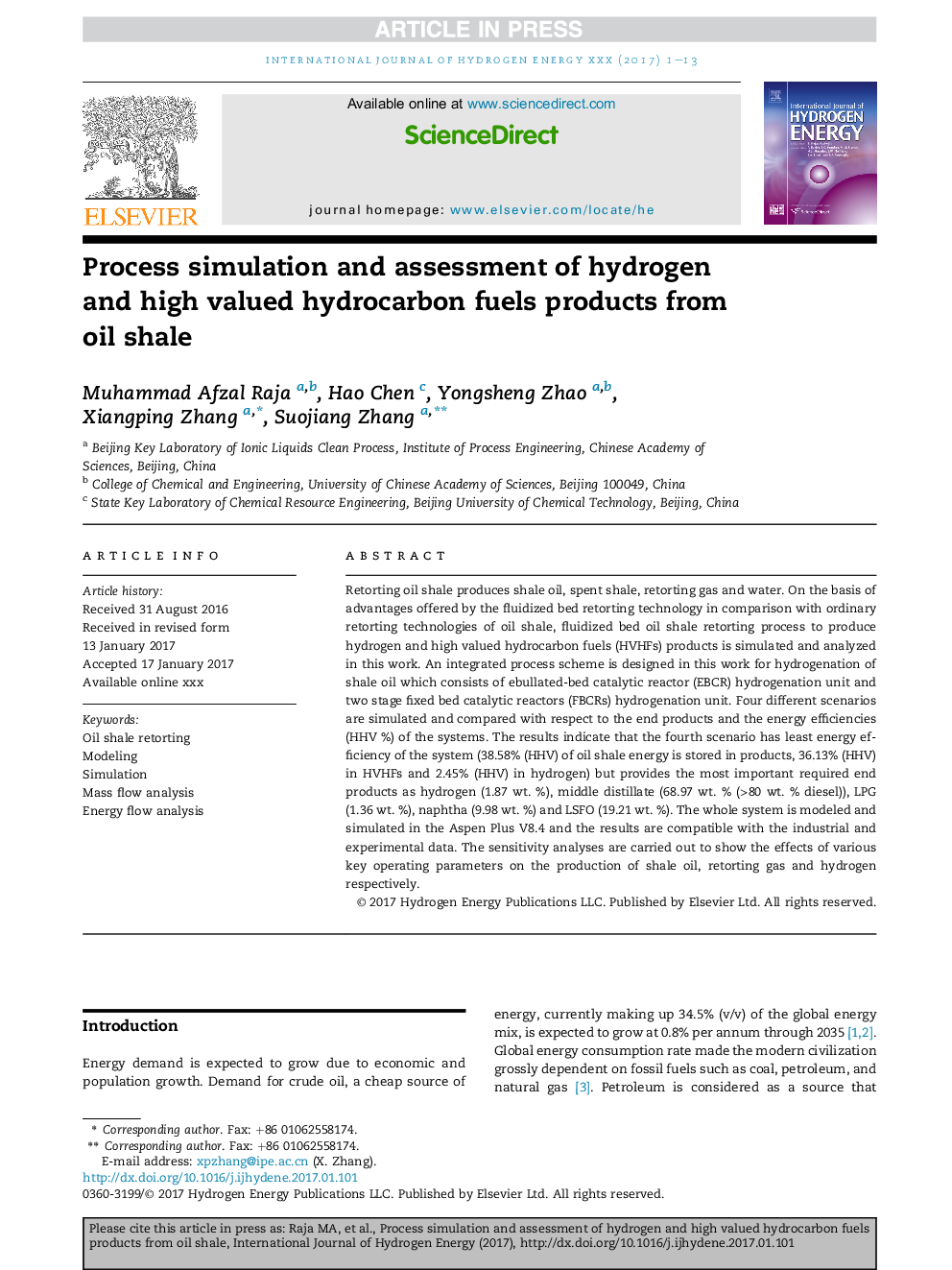| Article ID | Journal | Published Year | Pages | File Type |
|---|---|---|---|---|
| 5148367 | International Journal of Hydrogen Energy | 2017 | 13 Pages |
Abstract
Retorting oil shale produces shale oil, spent shale, retorting gas and water. On the basis of advantages offered by the fluidized bed retorting technology in comparison with ordinary retorting technologies of oil shale, fluidized bed oil shale retorting process to produce hydrogen and high valued hydrocarbon fuels (HVHFs) products is simulated and analyzed in this work. An integrated process scheme is designed in this work for hydrogenation of shale oil which consists of ebullated-bed catalytic reactor (EBCR) hydrogenation unit and two stage fixed bed catalytic reactors (FBCRs) hydrogenation unit. Four different scenarios are simulated and compared with respect to the end products and the energy efficiencies (HHV %) of the systems. The results indicate that the fourth scenario has least energy efficiency of the system (38.58% (HHV) of oil shale energy is stored in products, 36.13% (HHV) in HVHFs and 2.45% (HHV) in hydrogen) but provides the most important required end products as hydrogen (1.87Â wt. %), middle distillate (68.97Â wt. % (>80Â wt. % diesel)), LPG (1.36Â wt. %), naphtha (9.98Â wt. %) and LSFO (19.21Â wt. %). The whole system is modeled and simulated in the Aspen Plus V8.4 and the results are compatible with the industrial and experimental data. The sensitivity analyses are carried out to show the effects of various key operating parameters on the production of shale oil, retorting gas and hydrogen respectively.
Related Topics
Physical Sciences and Engineering
Chemistry
Electrochemistry
Authors
Muhammad Afzal Raja, Hao Chen, Yongsheng Zhao, Xiangping Zhang, Suojiang Zhang,
